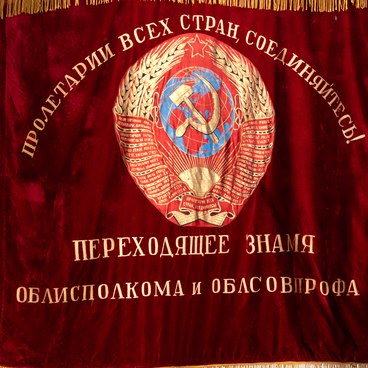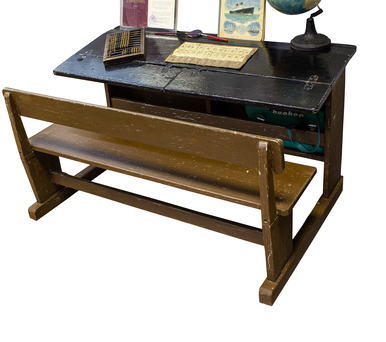The museum’s collection houses a 1929 black-and-white photograph. It depicts members of the first Kotovsk pioneer unit — children of workers and Krasny Boyevik Factory employees.
In late 1921, the Central Committee of Komsomol established a special commission, one of the main contributors of which was public figure Nadezhda Krupskaya. The commission was requested to establish a new children’s movement, develop its principles and program. On May 19, 1922, the second All-Russian Komsomol Conference made the decision to organize pioneer units.
In the Krasny Boyevik settlement (currently known as the town of Kotovsk), pioneer units were first created in April — May 1923. They were led by Komsomol members. Units were divided into squads of 9–10 pioneers. In a pioneer club, each squad had its own area which the children could decorate with slogans, emblems, and drawings. Pioneers attended regular gatherings where they participated in patriotic conversations and learned songs.
The settlement’s pioneer organization was called “Young Pioneer Center” and was located in the town’s Executive Committee building. Over the years, the organization developed, with more and more children admitted to the pioneer units. Pioneers were brought up in the atmosphere of patriotism, were actively engaged in sports, and even organized a string orchestra.
In the 1930s, pioneer units were organized at schools. The teachers attempted to make the activities of pioneers more engaging and diversified. Often, pioneers themselves came up with new initiatives and ideas for events. At the same time, the first pioneer camps were set up. Children often participated in war games, playing nurses, machine gunners, signal operators, and riflemen. The Palace of Culture opened a young technicians’ station that operated in close cooperation with a school.
During the Great Patriotic War, pioneers helped both on the frontline and in the rear. Many of them became scouts, guerillas, ship boys, helped to make propaganda posters, and take care of the wounded.
In late 1921, the Central Committee of Komsomol established a special commission, one of the main contributors of which was public figure Nadezhda Krupskaya. The commission was requested to establish a new children’s movement, develop its principles and program. On May 19, 1922, the second All-Russian Komsomol Conference made the decision to organize pioneer units.
The name ‘pioneer’ was suggested by innovative teacher Innokentiy Zhukov. In 1912–1914, he studied in Paris where he first discovered the works of Canadian writer Ernest Thompson Seton and British Army officer Robert Baden-Powell who were the founders of the Scout Movement. Among Scouts, the word ‘pioneer’ meant ‘groundbreaker’. Having returned to Russia, Zhukov promoted the Scout Movement. He also suggested introducing pioneer mottos similar to the reassuring slogans of Scouts.
In the Krasny Boyevik settlement (currently known as the town of Kotovsk), pioneer units were first created in April — May 1923. They were led by Komsomol members. Units were divided into squads of 9–10 pioneers. In a pioneer club, each squad had its own area which the children could decorate with slogans, emblems, and drawings. Pioneers attended regular gatherings where they participated in patriotic conversations and learned songs.
The settlement’s pioneer organization was called “Young Pioneer Center” and was located in the town’s Executive Committee building. Over the years, the organization developed, with more and more children admitted to the pioneer units. Pioneers were brought up in the atmosphere of patriotism, were actively engaged in sports, and even organized a string orchestra.
In the 1930s, pioneer units were organized at schools. The teachers attempted to make the activities of pioneers more engaging and diversified. Often, pioneers themselves came up with new initiatives and ideas for events. At the same time, the first pioneer camps were set up. Children often participated in war games, playing nurses, machine gunners, signal operators, and riflemen. The Palace of Culture opened a young technicians’ station that operated in close cooperation with a school.
During the Great Patriotic War, pioneers helped both on the frontline and in the rear. Many of them became scouts, guerillas, ship boys, helped to make propaganda posters, and take care of the wounded.



